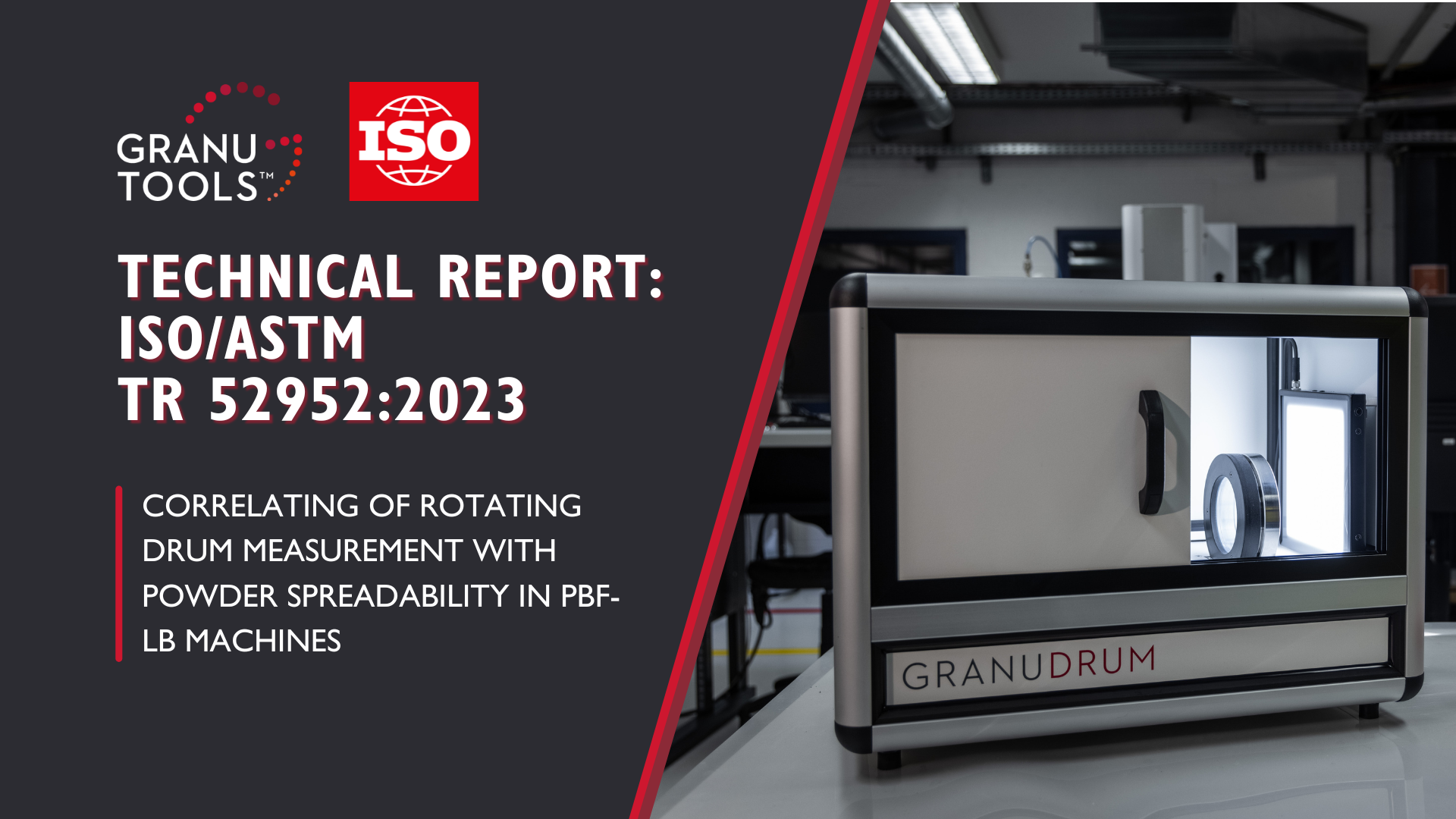The most recent technical report in the additive manufacturing industry (ISO/ASTM TR 52952:2023) was recently published. This report helps to address the characterization and optimization of metallic powders used in binder jetting processes and powder bed fusion, which is a crucial aspect of additive manufacturing.
 Image Credit: Granutools
Image Credit: Granutools
In many industries, including additive manufacturing, pharmaceuticals, food processing, and bulk material handling, the accurate characterization of fine powders and granular materials is critical for control and process optimization.
Many methods have been developed to gain insight into the complex behaviors of these materials and to attain reproducible and interpretable results.
Powder Flow Characterization in the Additive Manufacturing Industry
ISO/ASTM TR 52952:2023 has specifically been created to help address the concerns and needs of the additive manufacturing industry. It acknowledges the importance of metallic powders in AM processes, especially those that involve binder jetting and PBF-LB/M (Powder Bed Fusion - Laser Beam/Metal) technologies.
These processes are reliant on the deposition of successive thin layers of powder, which are subsequently fused or joined to construct parts. The vertical resolution and general quality of the manufactured parts are directly affected by the flow properties of the employed powders.
A key parameter in the assessment of powder is spreadability, i.e., the ability of feedstock material to create flat, homogeneous layers in the additive manufacturing process. Historically, operators have assessed the spreadability of powders through visual observation.
However, ISO/ASTM 52952 acknowledges the demand for a more systematic and economical method that links powder characteristics to spreadability before layers are deposited.
Investigating Flowability of Metal Powders Using an Automated Rotating Drum Method: Granudrum
This pioneering technical report presents a new method that combines measurements inside a PBF-LB/M machine with image processing. This innovative technique quantifies the homogeneity of powder bed layers during spreading, delivering valuable insights into spreadability.
It utilizes an automated rotating drum method, GranuDrum, to investigate the flowability of five metal powders where the dynamic cohesive index measurement establishes a correlation with powder spreadability during layer deposition.
ISO/ASTM TR 52952 also highlights the importance of characterizing each powder's particle size distribution (PSD) and morphology prior to testing. By utilizing static image analysis techniques in accordance with ISO 13322-1, this certification guarantees a complete understanding of the properties of a powder.
Conclusion
ISO/ASTM TR 52952:2023 provides additive manufacturing professionals with a vital tool for improving the control and optimization of metallic powders in PBF-LB/M machines.
By establishing a correlation between spreadability and macroscopic properties, this certification facilitates better-informed powder selection and more deposition speed combinations.
Stay ahead in the additive manufacturing industry with ISO/ASTM TR 52952:2023 and unlock new opportunities for high-quality, efficient, and reliable metal part production.

This information has been sourced, reviewed and adapted from materials provided by Granutools.
For more information please visit Granutools or read the full technical report on the ISO website.